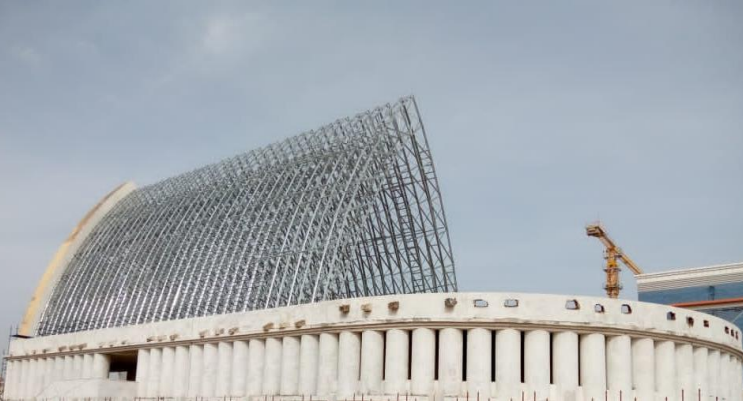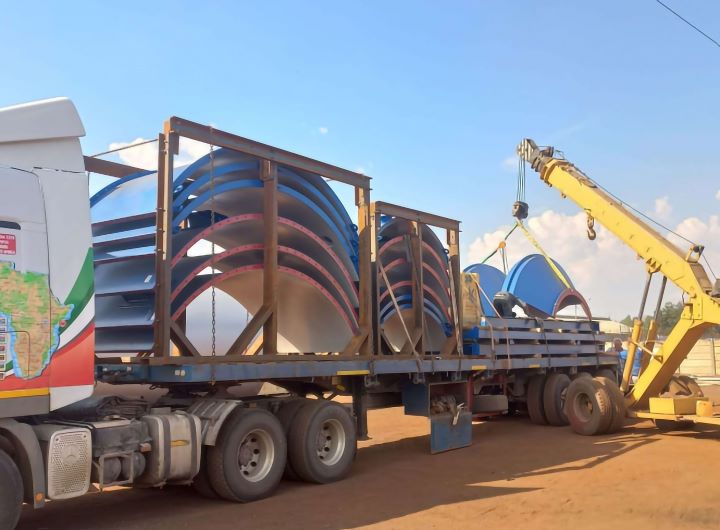
Our Lady of Peace Cathedral in Chad: an emblem of hope for steel in Africa.
The restoration of the Notre-Dame de la Paix cathedral in N’Djamena, Chad – which won the Light Steel Frame Building category at the Southern African Institute of Steel Construction (SAISC) Steel Awards 2023 – stands as a lasting monument to resilience and hope. Synergising the building’s history with contemporary design is a significant achievement, and a powerful testament to the tenacity and innovation of South Africa’s steel industry.
SAISC CEO, Amanuel Gebremeskel, makes the following observations about this miraculous achievement: “Through this project, we have demonstrated that our industry can do what others cannot – and, of course, that steel is the best solution. The project team could have used treated timber or even concrete. The fact that they went with a light steel frame structure shows that the local steel sector has moved towards solutions that are better suited to these sorts of projects.”
One of the key aspects of the project brief was that the roof should be constructed using a non-combustible material. That is because the cathedral, originally consecrated by the Catholic church in March 1965, burnt down during civil unrest in 1989.
The once beautiful building waited until 2014 for its restoration to officially begin.
Restoring hope
Local steel company MiTek Industries believed it could achieve what others thought was impossible. The remote location required on-site fabrication, and its Ultra-Span product’s precision cut-to-length capability proved to be the ideal solution. This prefabricated, light gauge steel roof truss system is both lightweight and compact, enabling the weight of the roof to be split across 1100-millimetre centres with trusses clustered close together. This effectively minimises the impact on the original foundations and addresses other key factors such as wind load.
During construction, the 21-metre frames were laid out on a jig adjacent to the cathedral. Two frames were arranged on top of each other with bracing placed between them. Cross-bracing was added to ensure a stable structure so that it could be hoisted into place using a crane that had fortunately been left on site and was available to use.
Once lifted into place onto the concrete ring beam, additional braces were fitted between each pair of trusses, creating a shell structure for the whole cathedral. The curved end at the back of the cathedral was critical, with difficult geometry to overcome.
“The distinctively curved roof design is actually very beautiful, but it is certainly not an easy one to construct. That, of course, speaks to the standard of the architects and the engineers, who were very involved in the process – from start to finish – working closely with the fabrication and installation teams. Together, they explored many different material options, with light gauge steel ultimately chosen as the most appropriate,” Gebremeskel observes.
He points out that working on an existing structure such as the cathedral is always more complicated than working on a new build, because one has to deal with whatever inherent errors are already present.
“The project team did an excellent job. The cladding work was also relatively complicated, as the overall geometry and design of the building is complex. It would be a difficult job to do even here in South Africa – let alone in Chad, close to the Sahara desert,” he explains.
The next challenge was that, with a roof structure clad in light gauge steel tiles, the cathedral’s interior could become very hot in the local climate. A robust insulation solution and underlay were therefore used to keep the building cool.
The restored cathedral is not only aesthetically pleasing, but also serves as a reinvigorated place of worship and community.





